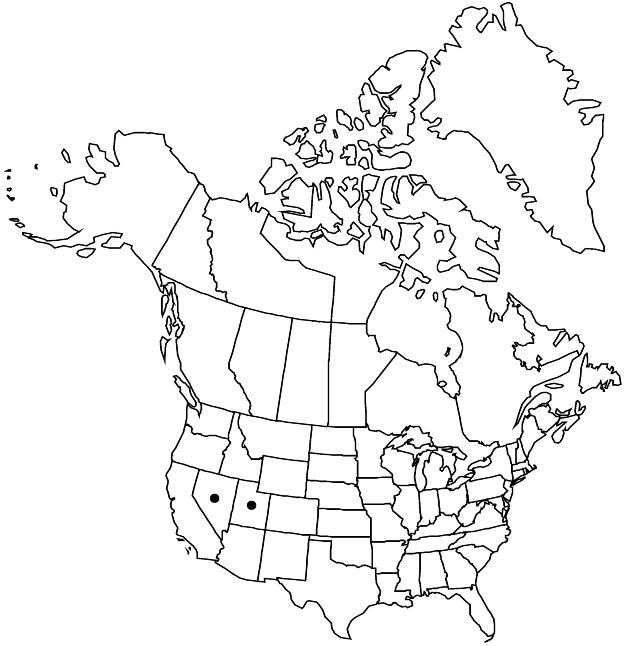Difference between revisions of "Ivesia setosa"
in N. L. Britton et al., N. Amer. Fl. 22: 290. 1908.
FNA>Volume Importer |
imported>Volume Importer |
||
| (3 intermediate revisions by 2 users not shown) | |||
| Line 1: | Line 1: | ||
{{Treatment/ID | {{Treatment/ID | ||
|accepted_name=Ivesia setosa | |accepted_name=Ivesia setosa | ||
| − | |accepted_authority=(S. Watson) Rydberg | + | |accepted_authority=(S. Watson) Rydberg |
|publications={{Treatment/Publication | |publications={{Treatment/Publication | ||
|title=in N. L. Britton et al., N. Amer. Fl. | |title=in N. L. Britton et al., N. Amer. Fl. | ||
| Line 15: | Line 15: | ||
|name=Ivesia baileyi var. setosa | |name=Ivesia baileyi var. setosa | ||
|authority=S. Watson | |authority=S. Watson | ||
| + | |rank=variety | ||
|publication_title=Botany (Fortieth Parallel), | |publication_title=Botany (Fortieth Parallel), | ||
|publication_place=91. 1871 | |publication_place=91. 1871 | ||
| Line 21: | Line 22: | ||
|name=Potentilla baileyi var. setosa | |name=Potentilla baileyi var. setosa | ||
|authority=(S. Watson) J. T. Howell | |authority=(S. Watson) J. T. Howell | ||
| + | |rank=variety | ||
}} | }} | ||
|hierarchy=Rosaceae;Rosaceae subfam. Rosoideae;Rosaceae tribe Potentilleae;Ivesia;Ivesia sect. Setosae;Ivesia setosa | |hierarchy=Rosaceae;Rosaceae subfam. Rosoideae;Rosaceae tribe Potentilleae;Ivesia;Ivesia sect. Setosae;Ivesia setosa | ||
| Line 45: | Line 47: | ||
-->{{#Taxon: | -->{{#Taxon: | ||
name=Ivesia setosa | name=Ivesia setosa | ||
| − | + | |authority=(S. Watson) Rydberg | |
| − | |authority=(S. Watson) Rydberg | ||
|rank=species | |rank=species | ||
|parent rank=section | |parent rank=section | ||
| Line 60: | Line 61: | ||
|publication year=1908 | |publication year=1908 | ||
|special status=Endemic | |special status=Endemic | ||
| − | |source xml=https:// | + | |source xml=https://bitbucket.org/aafc-mbb/fna-data-curation/src/2e0870ddd59836b60bcf96646a41e87ea5a5943a/coarse_grained_fna_xml/V9/V9_341.xml |
|subfamily=Rosaceae subfam. Rosoideae | |subfamily=Rosaceae subfam. Rosoideae | ||
|tribe=Rosaceae tribe Potentilleae | |tribe=Rosaceae tribe Potentilleae | ||
Latest revision as of 23:56, 5 November 2020
Plants green, tufted to ± densely matted. Stems ± ascending to nearly erect, 0.7–2.5(–2.8) dm. Basal leaves weakly planar to loosely cylindric, 5–9(–12) cm; sheathing base ± strigose abaxially; petiole 1–8 cm; lateral leaflets 5–10 per side, separate to overlapping distally, ± flabellate, 2–8 mm, incised ± 3/4 to base, sometimes nearly to base, into (3–)7–11 ovate teeth to narrowly obovate lobes, apex usually ± setose, surfaces ± sparsely hirsute, conspicuously glandular; terminal leaflets ± indistinct. Cauline leaves (0–)1; blade vestigial. Inflorescences (1–)5–15(–30)-flowered, ± open, 1–6(–12) cm diam. Pedicels 5–15(–20) mm. Flowers 7–10 mm diam.; epicalyx bractlets 5, lanceolate, 1.3–2.5(–3) mm; hypanthium patelliform, (1–)1.5–2 × 2–3.5(–4) mm; sepals (1.5–)2–3.5 mm, ± acute; petals yellow, oblanceolate to narrowly spatulate, 1.5–2.5 mm; stamens 5, filaments 0.8–1.5 mm, anthers yellow, oblong, 0.4–0.7 mm; carpels 2–8, styles 1.2–2 mm. Achenes greenish white to light tan, 1.7–2 mm, smooth, ± carunculate.
Phenology: Flowering summer.
Habitat: Dry, rocky talus slopes, boulders and outcrops, most often but not always of calcareous origin, occasionally away from immediate outcrops, sagebrush communities, conifer woodlands
Elevation: 1800–2600(–3100) m
Distribution

Nev., Utah.
Discussion
Ivesia setosa occurs mostly to the east and south of I. baileyi, from southeastern Humboldt and Churchill counties to Elko, White Pine, and northern Nye counties, Nevada, and in the Deep Creek Range of western Utah. It represents a transition between the planar-leaved, chasmophytic members of sect. Setosae and the cylindric-leaved, matted species of flatter sites. Stems of I. setosa are more generally erect than in other species in the section, and the usually calcareous substrate is noteworthy. The deeply incised (usually not quite to base) leaflets are somewhat intermediate between the toothed leaflets of I. baileyi and the leaflets of I. shockleyi that are incised to the base into separate lobes. The individual leaflets of both I. baileyi and I. setosa are more or less flat and distichously paired; in I. shockleyi, groups of leaflet lobes are folded over onto each other, giving a verticillate appearance to the leaflet arrangement.
Selected References
None.